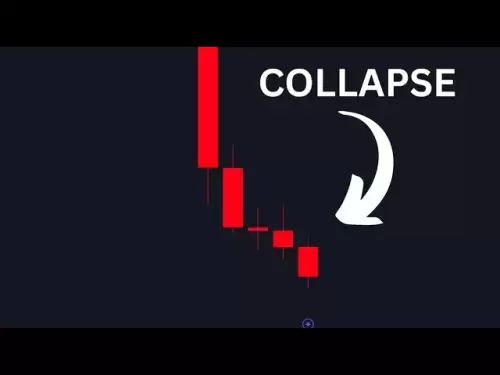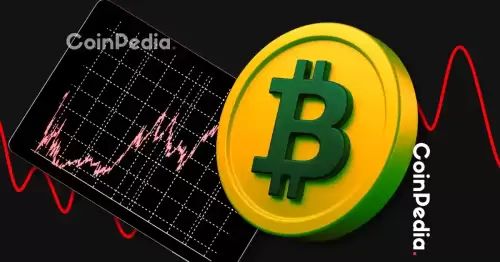 |
|
 |
|
 |
|
 |
|
 |
|
 |
|
 |
|
 |
|
 |
|
 |
|
 |
|
 |
|
 |
|
 |
|
 |
|
Cryptocurrency News Articles
Introducing Stabull: A New DEX Optimized for Stablecoins and Real World Assets
Apr 27, 2025 at 09:00 pm
That's exciting for some, but not very useful if you just want to buy something or send money without worrying the rate will crash overnight.

That's exciting for some, but not very useful if you just want to buy something or send money without worrying the rate will crash overnight. That's where stablecoins come in.
Think of stablecoins as the calmer cousins in the crypto family. They're designed to keep a steady price, usually by being "pegged" to the value of something stable in the real world, like the US dollar (think USDC or USDT), or other major currencies such as the Euro (EURS) and Japanese Yen (GYEN). This makes them super useful for things like online payments, sending money across borders faster and cheaper than old-school banks, and for trading within the world of DeFi (Decentralized Finance).
The Big Problem: Fluctuating Pegs in DeFi
Here's the tricky part: while a stablecoin like EURS might be backed 1-for-1 by real Euros sitting in a bank, its price on a crypto exchange can sometimes drift away from that perfect €1.00 value. This happens a lot on regular Decentralized Exchanges (DEXs) - think of these like crypto trading platforms run by code instead of a company.
Why do prices diverge?
Old Info: Most DEXs figure out prices based on the trades happening right there on the platform. They don't automatically know the real-time price of a Euro or Gold out in global markets at a given point in time. They sort of wait for traders to make deals that push the price back to where it should be.
Slow Updates: Imagine the price of the Euro changes quickly because of big news. A regular DEX might lag behind, still offering trades at the old, wrong price until enough people make trades to correct it. This process relies on smart traders called "arbitrageurs" who spot these price differences between exchanges and make quick trades to profit, which slowly fixes the price. But this can takes time.
Markets Close, Crypto Doesn't: The real-world markets for currencies (Forex or FX) and gold aren't open 24/7. They close on weekends and holidays. But crypto trades non-stop! So, if something major happens over a weekend that affects the value of the Turkish Lira, a stablecoin like TRYB might still be trading on a DEX at Friday's price until Monday morning when the real markets open and arbitrageurs can jump in. This leaves the price stale and potentially wrong for days.
For people using stablecoins, this is annoying. You are often given a bad price. For the issuers of stablecoins, it's a real headache. They want their stablecoin to be useful and reliable, but if its price is constantly oscillating around the peg or has a persistent premium, it undermines that usefulness, even if the backing is solid.
Enter Stabull: Built Different, Built for Stability
This exact problem - especially for stablecoins pegged to currencies other than the US dollar - is why Stabull Finance was created. Stabull isn't trying to be just another DEX listing every token in the broadest terms. It's optimized for stablecoins and Real World Assets (RWAs) like a Euro stablecoin or tokenized gold. That's it. No Dogecoin, no Bitcoin, just the assets that have off-chain equivalents, and real-world value.
Because Stabull is so focused, it can use a smarter approach. It was actually built hand-in-hand with a group of non-USD stablecoin issuers who were tired of their coins' prices drifting on other platforms. They needed a place where liquidity was good and prices stayed true to their off-chain counterparts.
The Secret Sauce: Off-chain Oracles
So, how does Stabull keep prices more accurate? It uses Oracles.
An oracle brings trustworthy, real-world (off-chain) data on chain, available for defi and other protocols to use. Stabull works with trusted oracle providers (like the well-known Chainlink) that are constantly watching the live prices on the big, global FX and commodity markets.
Here's how it works on Stabull:
Get the Real Price: The oracle tells Stabull the current, real-world price. For example, it constantly feeds the live EUR/USD price into Stabull's EURS/USDC trading pool, or the TRY/USD price into the TRYB/USDC pool.
Proactive, Not Reactive: Unlike generalised DEXs that wait for traders to fix prices, Stabull is proactive. It uses the live oracle price as its target. Its smart contract pools (the AMM - Automated Market Maker) are designed to automatically focus the trading activity and liquidity right around that real-time oracle price.
Smart Pricing Curve: Stabull's pricing curve or "invariant" is designed to offer very low "slippage" (the difference between the price you expect and the price you actually get) when you trade near the current oracle price.
Disclaimer:info@kdj.com
The information provided is not trading advice. kdj.com does not assume any responsibility for any investments made based on the information provided in this article. Cryptocurrencies are highly volatile and it is highly recommended that you invest with caution after thorough research!
If you believe that the content used on this website infringes your copyright, please contact us immediately (info@kdj.com) and we will delete it promptly.






























































